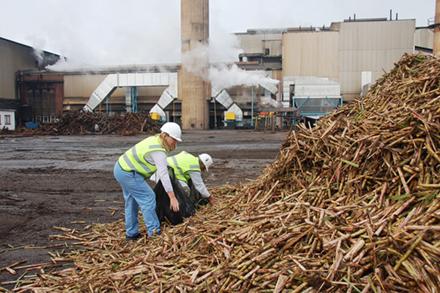Sugar Byproducts May Help Refresh the Environment

The average American consumes 17 teaspoons of sugar per day. It takes a lot of raw material to create all that sweetness, but there is a downside – what do you do with all the leftover sugarcane processing waste?
Scientists with the Agricultural Research Service’s (ARS) Southern Regional Research Center (SRRC), in New Orleans, LA, are turning that waste into products that can refresh the soil. Two examples involve mill mud and bagasse.
Mill mud is an enriched sludge that is full of organic carbon, nitrogen, and nutrient minerals. The mud can help restore fertility to sandy soil and land affected by erosion or biomass burning.
Bagasse, the rest of the sugarcane plant once the sugar is removed, can be an inexpensive component of fuel, paper, particle board, mulch, and roughage feed for herds. Bagasse is also a natural filter to remove organic and metal contaminants from water.
Read "Sweetening the Deal" to learn more.


